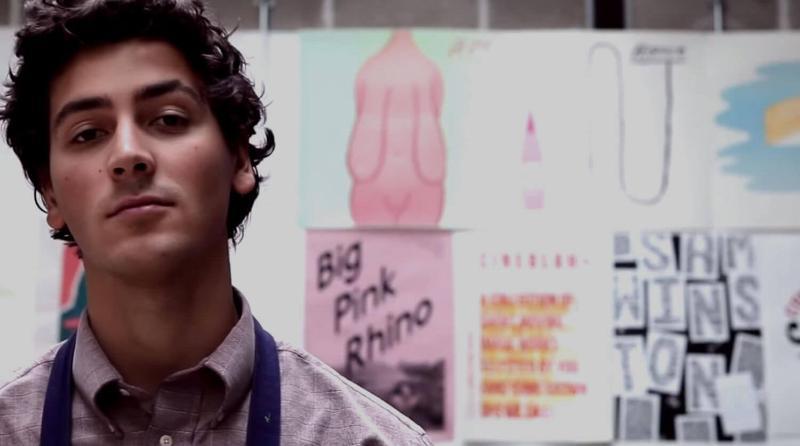Graphic Design
BA (Hons)
Undergraduate degree - single honours
- UCAS codes: Institution B20, Course W200 or S168 (with professional placement) or W203 (with integrated foundation)
- Graphic Design - Programme Document
- Award
- BA (Hons) Graphic Design
- School/s
- Bath School of Design
- Campus or location
- Locksbrook Campus
- Course length
- Three years full time, or four years full time with professional placement year. Part time available.
- UCAS codes
- Institution Code: B20
- Course Code: W200; or S168; or W203
- Campus Code: A,BSU
Entry requirements
We accept a wide range of qualifications for entry to our undergraduate programmes. The main ones are listed under 'Typical offers' in the main column below. For combined courses, please check both subjects. If your qualification is not listed, please email admissions@bathspa.ac.uk with your specific details.
Combine the key areas of graphic design and illustration practice in this broad-based Graphic Design course.
- Understand design conventions to challenge them, working across print, screen and interactive media.
- Learn through carefully structured modules taught by supportive, experienced staff.
- Experience working with clients and solve real production problems through live briefs.
University of the Year for Social Inclusion
Sunday Times Good University Guide, 2024
Joint 1st in the UK
for Value Added in Graphic Design (Guardian University Guide, 2024)
#14 in the UK
and #2 in the South West for Continuation in Art and Design (Complete University Guide, 2024)
#21 in the UK
and #2 in the South West for Graduate Prospects "On Track" in Art and Design (Complete University Guide, 2024)
Graphic Design at the Bath School of Design is a well-established course with an excellent reputation and employment record. You’ll learn through a comprehensive making-based experience, designed to equip you with the full range of skills you’ll need to thrive in the dynamic and interconnected creative industries.
You’ll develop works across print, screen and interactive media, and be taught by a team of full-time and visiting tutors, who are design specialists, illustrators or graphic communication practitioners.
You’ll be supported through excellent workshop facilities in specialist areas such as letterpress, photography, screen printing, etching, lithography and digital design, and through our course-specific lecture series, delivered by highly-regarded national and international designers and illustrators.
Study options
The preliminary and intensive Integrated Foundation in Art and Design is designed to develop your ideas, skills and confidence in readiness for progressing to year one of your degree programme.
This year provides you with the opportunity to identify, apply for, and secure professional experience, normally comprising one to three placements over a minimum of nine months. Successful completion of this module will demonstrate your ability to secure and sustain graduate-level employment.
By completing the module, you'll be entitled to the addition of 'with Professional Placement Year' to your degree title.
Before your Professional Placement Year, you'll work to secure your placement, constructing a development plan with your module leader and your placement coordinator from our Careers and Employability team.
On your return to University for your final year, you'll submit your Placement Portfolio, detailing your development on your placement, for assessment.
What you'll learn
We teach you the critical, technical and aesthetic skills necessary to become a professional graphic communicator: designer, typographer, illustrator, or imagemaker. You’ll discover the varied and complex nature of design practice.
Our aim is that you’ll graduate as a strategic thinker, innovator and maker, having produced creative and challenging outcomes across a range of media or within your chosen specialist area.
Year one
You’ll study carefully-structured studio modules examining the core aspects of graphic communications, typography and image. You’ll learn to conceptualise, produce, and critique type and images. Attending specialist workshops will help you develop practical skills.
Workshops include: drawing, screenprinting, letterpress, etching and lithography, photography (analogue and digital), motion graphics, and animation (analogue and digital). You’ll gain an awareness of the industry through a Professional Contexts module, and a contextual framework through a Historical and Critical Studies module.
Year two
You’ll explore interactive media in the context of type and image. You can choose to focus on graphic design, illustration or interactive media, or keep an interdisciplinary approach. A Professional Development module will help you consider and develop your professional identity as a practitioner and your Historical and Contextual Studies module will prepare you for your dissertation.
Year three
You’ll produce of a series of portfolio projects. Live briefs will give you experience of dealing with clients, real production problems, and solutions. Portfolio clinics conducted by professional designers help you consider and prepare your portfolio before graduation, and career workshops help you get ready for career networking, opportunity finding or further study.
You’ll be assessed in two ways. Firstly, during your studio modules there will be critiques, advice and commentary from your tutor or peers about your work (formative assessment). Secondly, after you present your research and you final design outcomes, you’ll receive written feedback with a mark from your tutor (summative feedback).
You’ll learn through a variety of methods including directed technical workshops, lectures, small group seminars, and, most frequently, through the practice of making in specialist tutor-led studio sessions. Working in studio-sized groups with a dedicated specialist tutor, you’ll develop typography, image making and illustration skills. By responding to set design problems and participating in the frequent studio critiques with tutors and peers, you’ll develop strong critical and reflective abilities.
Self-directed learning is facilitated through materials on Ultra – Bath Spa University’s Virtual Learning Environment – and other web-based resources. You’ll also have access to our specialist art and design library.
To find out more about how we teach and how you'll learn, please read our Learning and Teaching Delivery Statement.
“The determination and passion that the students have at Bath Spa University is inspiring, it is such a rewarding and positive environment to study...”
Jordan Wright, Graphic Communication student
Course modules
This course offers or includes the following modules. The modules you take will depend on your pathway or course combination (if applicable) as well as any optional or open modules chosen. Please check the programme document for more information.
Modules for the integrated Foundation year option are listed on the Integrated Foundation Year for Art and Design page.
- Design Principles: type and image
- Designing with Time: type and image
- Professional Development 1
- History and Context: Introduction to Visual and Material Culture
- Interactivity with type and image
- Professional Development 2
- Graphic Communication: social good
- Graphic Communication: culture
- Graphic Communication: commerce
- Design: Contemporary Issues and Practice
- Professional Placement Year
- Independent Practice 1
- Professional Development 3
- Visual and Material Culture: Final Study
- Independent Practice 2
Opportunities
As part of your degree, you could study abroad on a placement at one of Bath Spa’s partner universities.
We offer an international study trip to first and second-year students. Past destinations have included New York, San Francisco, Las Vegas, Cuba, Iceland, Amsterdam, Berlin, St. Petersburg, Morocco, and Beijing. You’ll have a chance to meet and talk with internationally acclaimed designers, illustrators, design writers and curators in their studios.
There are also visits to museums and galleries. Additionally, each year will have a study day-trip, typically to London, to review key exhibitions.
We have good industry links. These include a final year personal portfolio review session, where you’ll benefit from real industry advice on your portfolio and presentation techniques from established practising designers and illustrators.
Our graduates become graphic designers, art directors, illustrators, animators, and interactive media designers. They work across the full range of the creative media industry including advertising, motion graphics, photography, and digital and print publishing.
We encourage our students to participate in design competitions and our third year students must develop one competition brief as part of a final year portfolio. Past students have had success with D&AD New Blood as well as other national competitions.
Each year final year students can be nominated for sponsored awards: The Ripe Prize for Graphic Communication Project of the Year; and The Emtone Prize for Outstanding Graphic Communication Student of the Year.
If you’re a full-time undergraduate student starting your first year at Bath Spa University, you can apply for the Certificate in Global Citizenship, which you’ll study alongside your degree.
You’ll gain global awareness and add an international dimension to your student experience, and funding is available. On successful completion of the programme, you’ll be awarded a Certificate in Global Citizenship. This is in addition to your degree; it doesn’t change your degree title or results.
Develop a wealth of indispensable digital skills that you can take into your future career. One of only three Adobe Creative Campuses in the UK, we provide all Bath Spa students with access to the full Adobe Creative Suite, giving you the tools to communicate creatively, whatever your course or chosen professional field.
Facilities and resources
As a BA Graphic Communication student, you’ll benefit from access to comprehensive digital workshops and specialist art and design facilities, including:
- Our student service point at Locksbrook where you can purchase subsidised art and design materials, hire out equipment for free and collect Library resources
- Access to our well-stocked Library at Newton Park
- Specialist technical workshops across all of art and design
- Access to studio space where you can work on projects and refine your practice
You’ll have access to a range of resources, designed to ease workflow and facilitate creative and experimental practice. This includes access to both traditional analogue and cutting-edge digital technology. Our studios feature new Mac computers connected to digital printing. Large format colour printing is available in the adjacent technical workshop.
Locksbrook campus
Locksbrook Campus is a Grade II listed building designed by Nicholas Grimshaw in 1976. It has now been transformed into an innovative, open plan space, redesigned to meet 21st century environmental standards, with technical workshops surrounded by flexible studio spaces and large social areas.
Locksbrook has received both a RIBA South West Award 2021 and RIBA National Award 2021, recognising and celebrating what an amazingly inspirational space it is to come together to design, make, do, create and learn in.
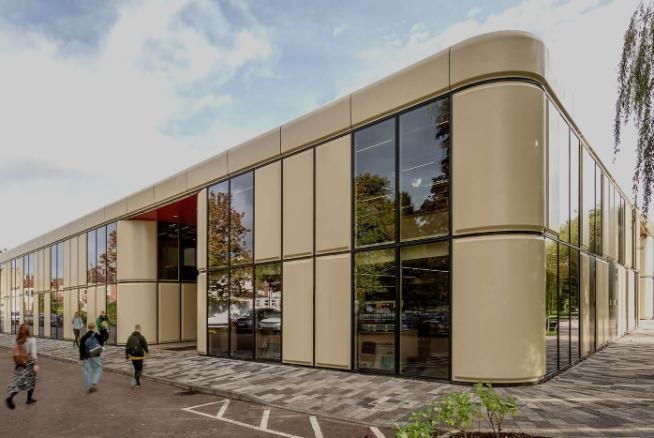
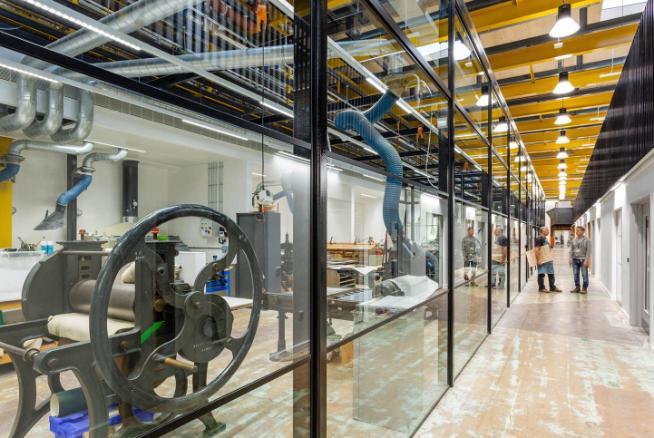
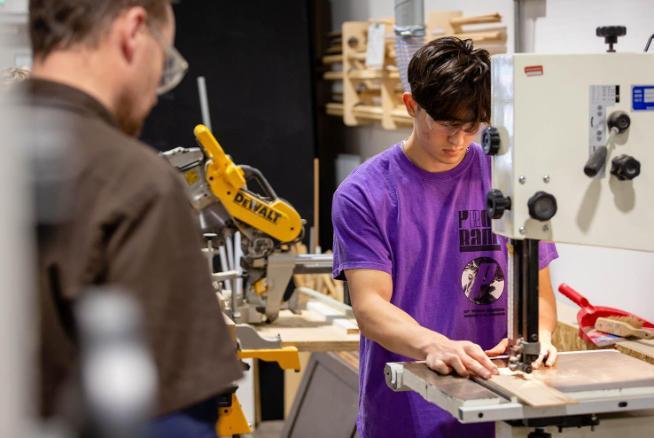
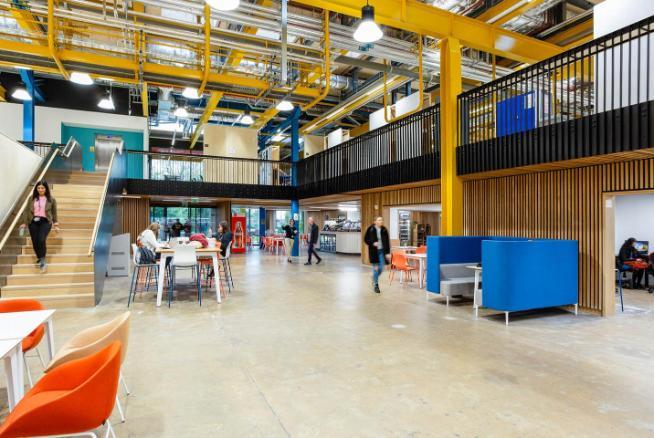
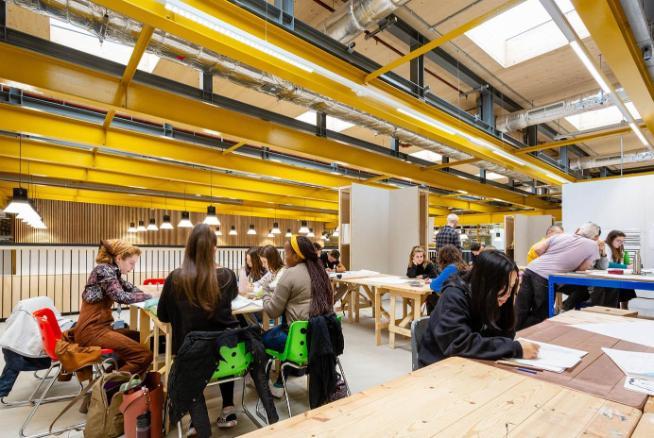
Fees
| Student | Annual tuition fee |
|---|---|
| UK full time | £9,250 |
| UK part time | £4,625 |
| International full time | £17,585 |
Professional Placement Year
During the placement year, the fee is reduced to 20% of the full time fee. This applies to UK and EU/International students.
- UK: £1,850
- International: £3,517
"Graphic Design" is a name revision to the programme previously running as "Graphic Communication".
Interested in applying?
We’re looking for individuals who demonstrate curiosity and determination combined with a clear interest in graphic communication. We look for evidence of these qualities both in your portfolio and at your interview.
We accept a wide range of qualifications for entry to our undergraduate programmes. The main ones are listed below:
- A Level – grades BBB-BCC including a Grade B in Art and Design or related subject.
- BTEC – Extended Diploma grades from Distinction Distinction Merit (DDM) to Distinction Merit Merit (DMM) in a related subject, or evidence of experience in Art and Design.
- T Levels – grade Merit preferred in a relevant subject.
- International Baccalaureate – a minimum of 32 points are required with a minimum of grade 5 in an Art subject at Higher Level.
- Access to HE courses – typical offers for applicants with Access to HE will be the Access to HE Diploma or Access to HE Certificate (60 credits, 45 of which must be Level 3, at Merit or higher) together with evidence of experience in Art and Design.
If you don’t meet the entry requirements above, we may be able to accept your prior learning or experience from outside of formal education. See our Accreditation of Prior Learning (APL) page to learn more.
English Language Requirements for International and EU Applicants
IELTS 6.0 - for visa nationals, with a minimum score of IELTS 5.5 in each element.
Course enquiries
For further information about the programme or entry requirements, please email us at admissions@bathspa.ac.uk.
Ready to apply? Click the "apply now" button in the centre of this page.
Need more guidance? Head to our how to apply pages.
Applicants who meet the entry criteria will be invited to bring a portfolio of creative work to interview at our Locksbrook campus. More details will be supplied by email to those invited.
You’ll need to take us through your work; talk about specific projects, the problems you’ve encountered and how you went about solving them. We’re particularly interested to see your process of designing and illustrating as much as the final finished projects – research sketchbooks, prototypes, drawings (including life drawings) are important. We understand not all candidates will have had the same curriculum or access to the same resources so we anticipate variation in portfolio content.
A strong portfolio is a great asset in interview, it is also important to show engagement in the visual and design arts above and beyond your current course. Research contemporary designers and artists, filmmakers, fashion designers, writers, collect printed matter that interests you, go to exhibitions and consider how you can impact the world of graphic communication.
Course leader: Stuart Henley
Email: s.henley@bathspa.ac.uk
